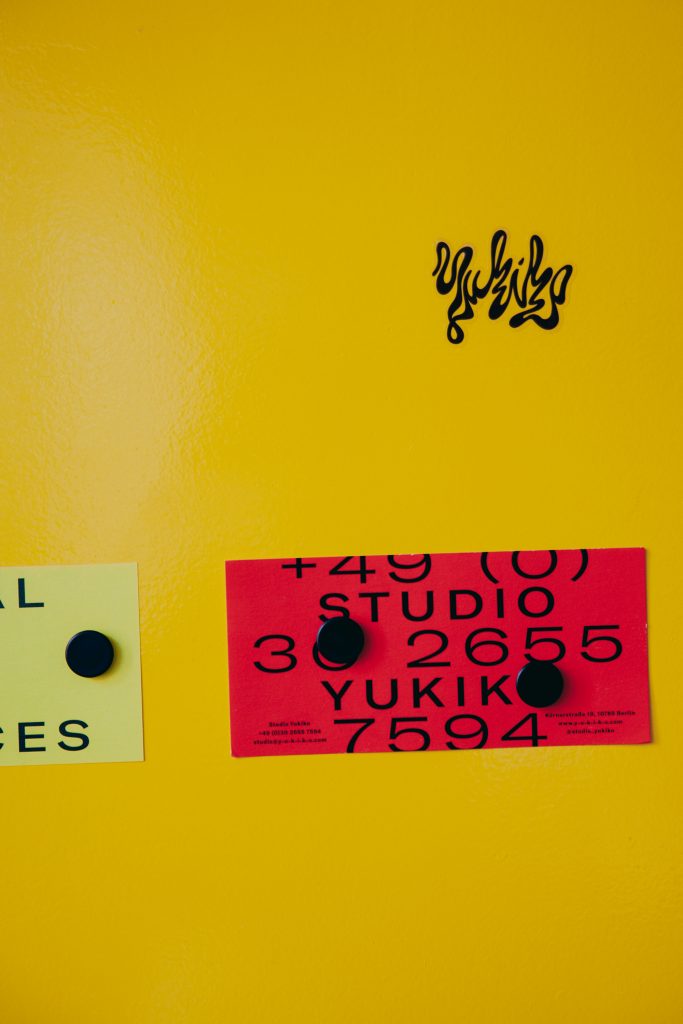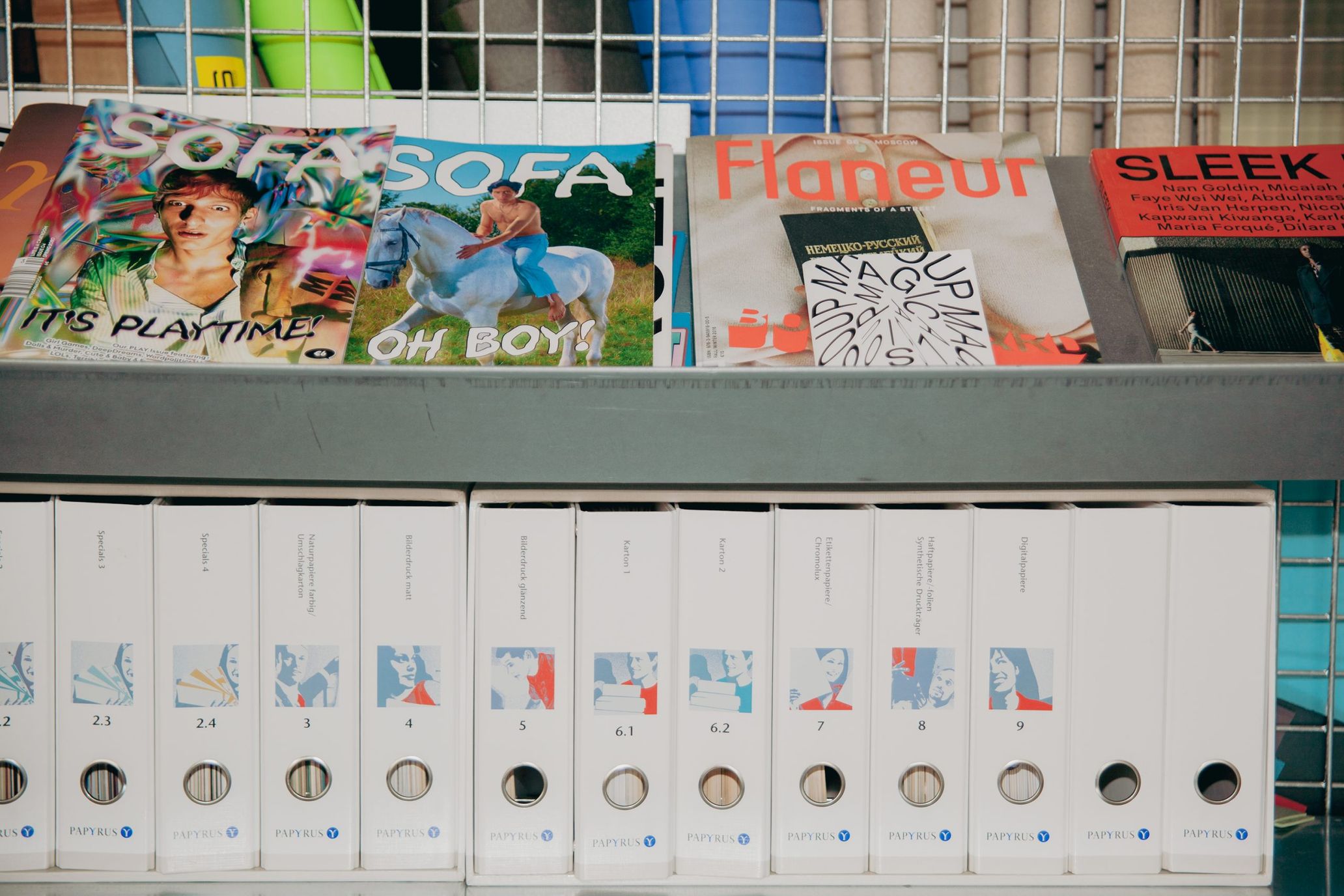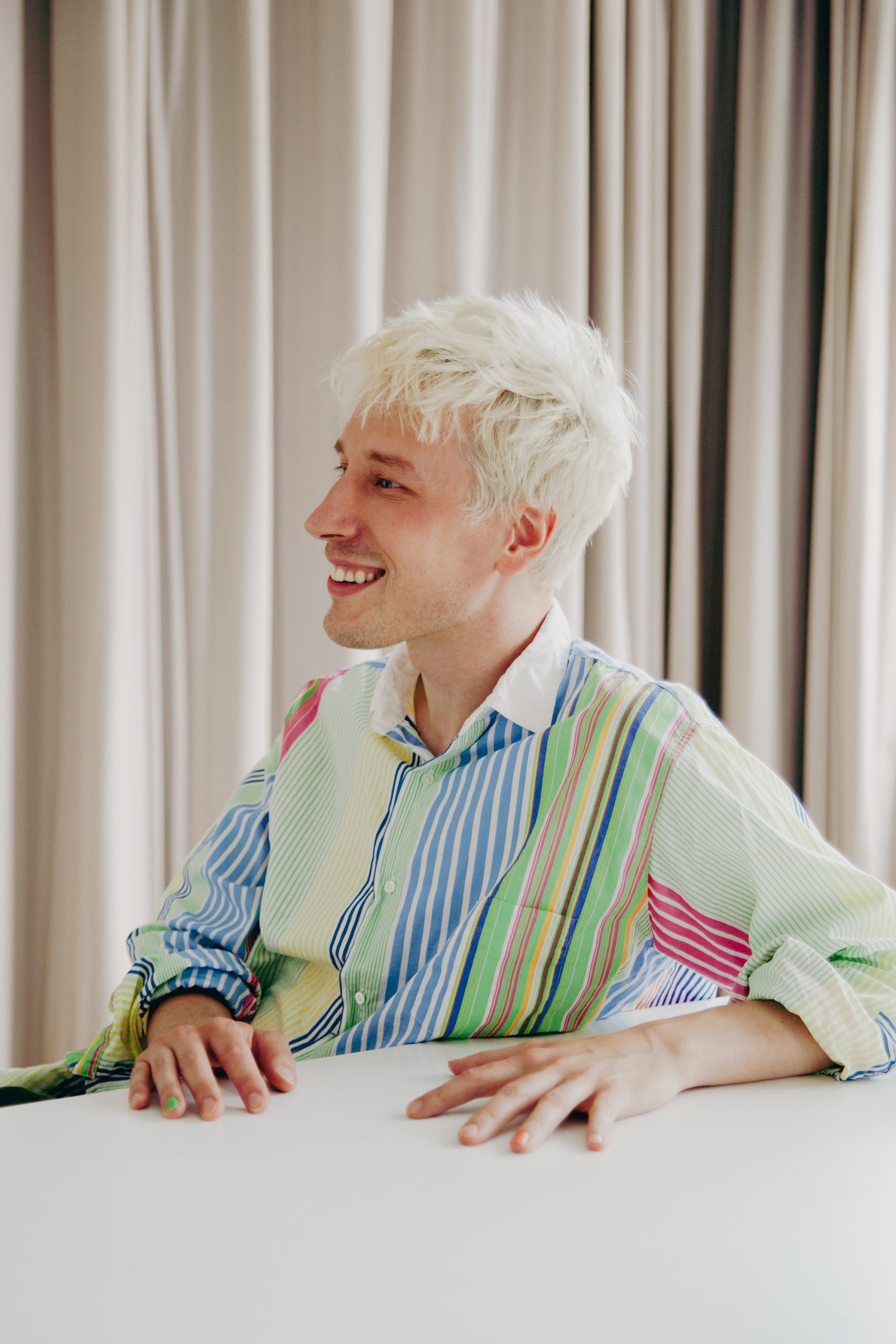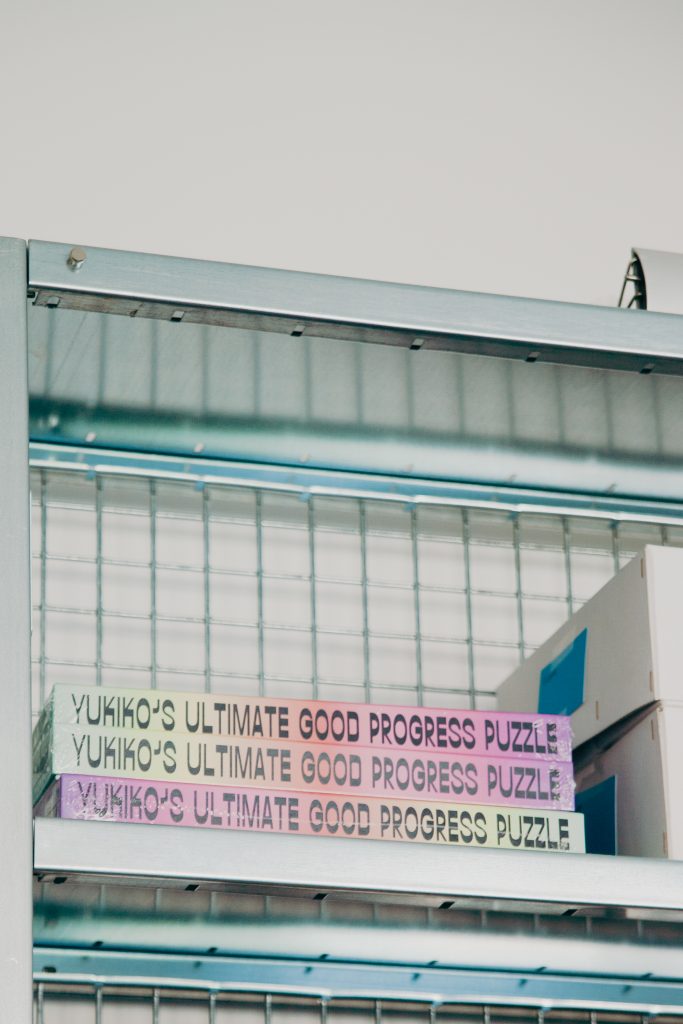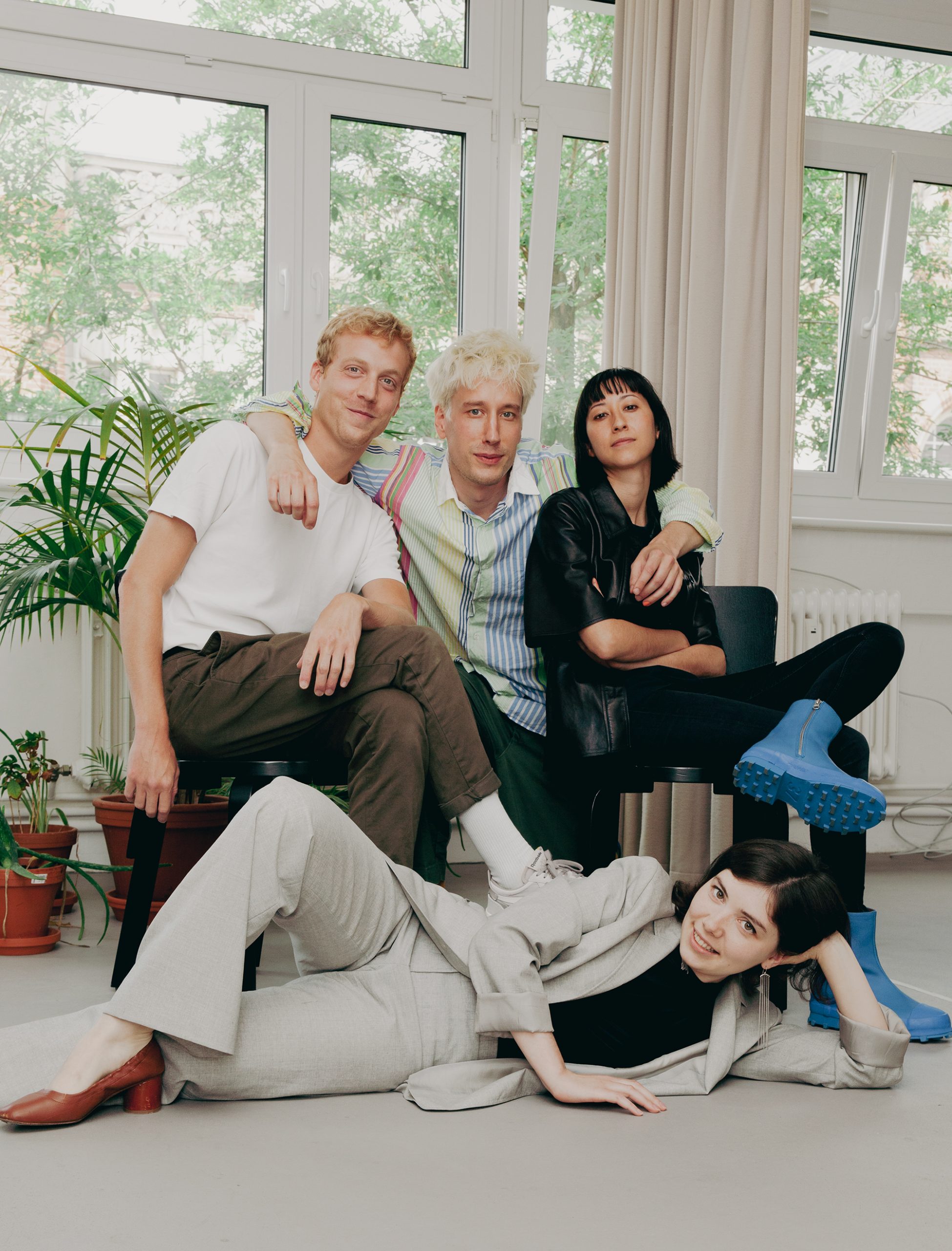Berlin is a breeding ground for unique magazine-making such as SLEEK Magazine and Flaneur Magazine, which are distributed in Japan as well. Studio Yukiko works on many eye-catching designs and advertisements. Initially, I thought, “Yukiko? Is there a connection to Japan?” but I wasn’t sure.
I discovered there were ten professionals behind the undeniably unique visuals. How do they make magazines that appeal to the world in Berlin? Curious about their presence and ability to put out good work, I visited their studio. I spoke to founder Johannes and Ira, who moved from Moscow to Berlin three years ago and makes visuals.
I learned about their attitude toward creating things by mainly talking about Flaneur Magazine, which is integral to the studio. From start to end, they were smiley but never compromised their professionalism. That balance was just the coolest. The following is Studio Yukiko’s first interview with Japanese media.
Successfully launching the first issue of Flaneur Magazine without knowing the fundamentals of making a magazine
——You must’ve been asked this question numerous times, but what is the origin of the name Studio Yukiko?
Johannes: Yukiko is Michelle’s middle name; she was born in Hamburg, Germany, and after living in England, moved to Berlin. It’s still a rare name in Europe, so we thought it would stand out and be easy to remember.
——I see. I wondered about that for a long time, so I feel like it’s no longer a mystery. How did Studio Yukiko start?
Johannes: My co-founder Michelle and I founded Studio Yukiko in 2012. We started off creating music videos, eventually this led to creating graphic design and art direction for album art works.
——So, Studio Yukiko wasn’t a design studio for magazines at first. Now, you single-handedly work with world-renowned magazines from Berlin. How did you develop connections with the magazine industry?
Johannes: The editorial team behind Flaneur approached us one day, but we never made a magazine before, so we really didn’t know what we were doing. Looking back at the first issue now, there are a lot of things we would have done differently, but it allowed us to be more experimental.
——What kind of magazine is Flaneur Magazine?
Johannes: Flaneur is an independent magazine that focuses on a single street for each issue, uncovering microscopic details to paint a portrait of the overlapping lives and histories of a place. Together with the editorial team, we embrace a street’s many layers, its complexities and contradictions, and we spend time getting to know each site intimately to inform our art direction. Our collaborations with locals create differing viewpoints onto a place, letting a street shine through the eyes of its artists, writers, grocers, workers, activists, long-standing residents and more.
——Ira, how did you find out about Studio Yukiko?
Ira: We met in 2016 when the team came to Moscow to work on sixth issue of Flaneur. Editors and designers of Flaneur magazine come to the city about which the upcoming issue is and explore the local context. I was a part of this context so we met and talked several times. Eventually I did a poster that was a part of the magazine. Before Studio Yukiko I was an independent art director for different cultural projects in Moscow so when moving to Berlin three years ago it was clear that we have to collaborate with Yukiko soon or a later.
——I read the Moscow issue of Flaneur Magazine and was surprised by how impactful the design was. That’s when I first discovered Studio Yukiko. Was Flaneur Magazine your first project?
Ira: In the studio, yes. I had a small part in Moscow Flaneur Magazine but it had a big impact for me. Later on we started to collaborate mostly on branding projects and as one of them created an identity for the Flaneur Festival in HKW that was introducing the eighth issue. Now at Yukiko I’m working on identities for projects like Driving the Human — an ongoing scientific and artistic collaboration developing seven tangible prototypes responding to contemporary scenarios, or Cafe Camaleon — a cafe by Camper at the center of Berlin, or a Dazed Live festival celebrating 30 years of Dazed Magazine. With this projects we’re trying to highlight a cultural part that graphic design plays and how it shapes the environment surrounding us in a broad sense.
——How do you maintain creativity in your work for clients? How do you keep that balance?
Johannes: We always give our 100% with all projects. We are lucky to have a number of very different projects running at the same time in the studio, from cultural branding projects, working with museums or institutions, to working with big brands such as Nike and of course our many book and magazine projects. Every brief is a different creative challenge. We often push creativity to the maximum, and ask our clients to trust us.
Ira: In regards to our relationship with clients, we make sure it’s collaborative. After all, we value projects according to ways of thinking based on the content. We try not to make things that look cool on the outside but are empty.
——Does the same apply to advertising campaigns, for instance?
Johannes: At Studio Yukiko, we always have a concept. We think about the reasons behind a potential action through stories and campaigns. The idea comes first, and the words and visual image come next. So, the reverse order, like applying meaning to something we made (creating something and then thinking about the meaning later) doesn’t happen.
Also, instead of saying client, we say collaborator as much as possible. There’s no hierarchy in our team, and we’re all connected equally. When we work with a client, we try to maintain this style. We want to change the experience from providing a simple service to collaborating with Studio Yukiko. If we don’t do that, we would come up with something uninteresting and fall into a vicious cycle of things not going to plan. Thankfully, we’re blessed with brilliant collaborators.
Asking oneself, “What is the most radical thing I can do in this situation?” without adhering to common practice
——Out of the various mediums you work with, why are you drawn to magazines?
Johannes: For me, magazines are pure domains. What’s necessary to enjoy work is to be as experimental as possible. Magazines make that possible. By challenging ourselves with styles, fonts, and layouts, we could be free and break rules within a determined format.
——I was struck by how elevated the design of Year Zero Magazine from Istanbul was.
Johannes: Thank you! It’s an exciting project. The world is spinning faster and getting smaller. We have greater access to information than ever before, with time seeming to move quicker than the blink of an eye. One way or another, the new generation always finds a way to express themselves — and make a lasting impression. Year Zero, Istanbul’s underground radio station and magazine for all things culture, provides a space for the most exciting emerging talent in and around Turkey to make their statements, while also documenting the fluid, continually shape-shifting times. Drawing from Istanbul’s local vernacular, our magazine design employs spliced graphic devices — with content spilling over surface edges — to express an unbound culture in continuous flux and transgression. Rough-and-ready photography, low-res blurring and torn type invoke cultural protagonists clashing, combining and inspiring one another in turn.
I think that was the most radical thing to do, and it’s something we’re conscious of. When I do something, I always ask myself, “What is the most radical thing I can do in this situation?”
——What’s next in store for Studio Yukiko?
Ira: As long as we have the inquisitiveness towards ideas and overall visuals we want to make, we want to maintain the balance between what we want to do and what we can do. To challenge rules and the limits of common sense, expand boundaries, and reflect on a context that surrounds us. To pursue our ambition. And to incorporate that into work. To work with clients who share the same vision.
Johannes: I don’t have anything to add to that. As for the next step for Flaneur Magazine; we’re creating our ninth issue, which is the Paris issue. What’s different from before is that we’re figuring out how to collaborate digitally with a local editor. We can’t physically travel because of covid, so we need to look for ways to work with creators in various countries like we always have, under these circumstances. Ultimately, a print magazine will be complete, but the big difference is that the previous process was like traveling for several months.
——I’ll be looking forward to that.
Studio Yukiko
Website:http://y-u-k-i-k-o.com/
Instagram:@studio_yukiko
Photography Chihiro Lia Ottsu
Translation Lena Grace Suda

